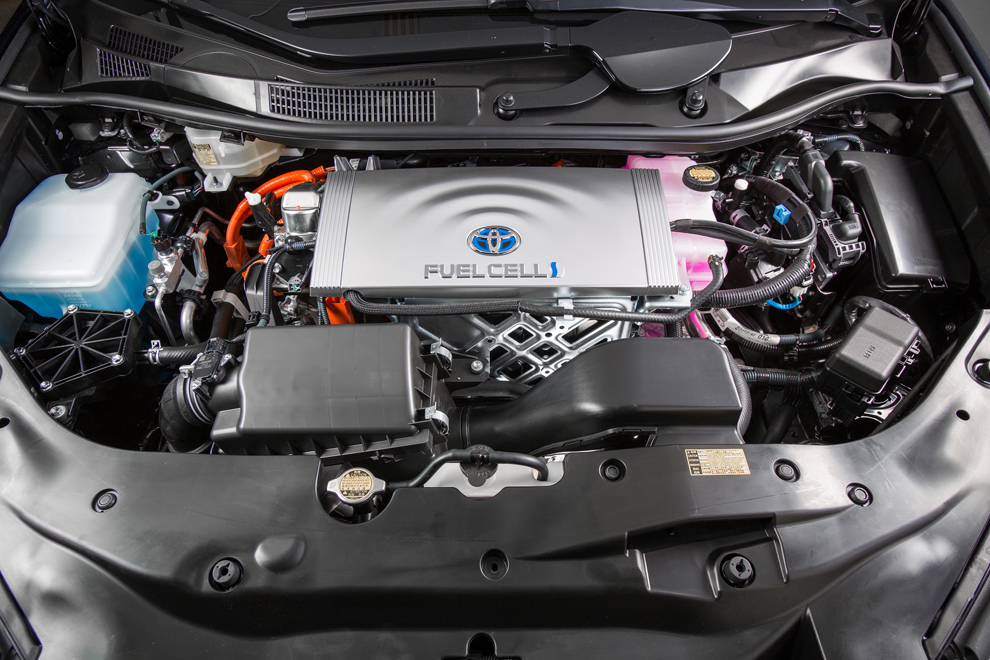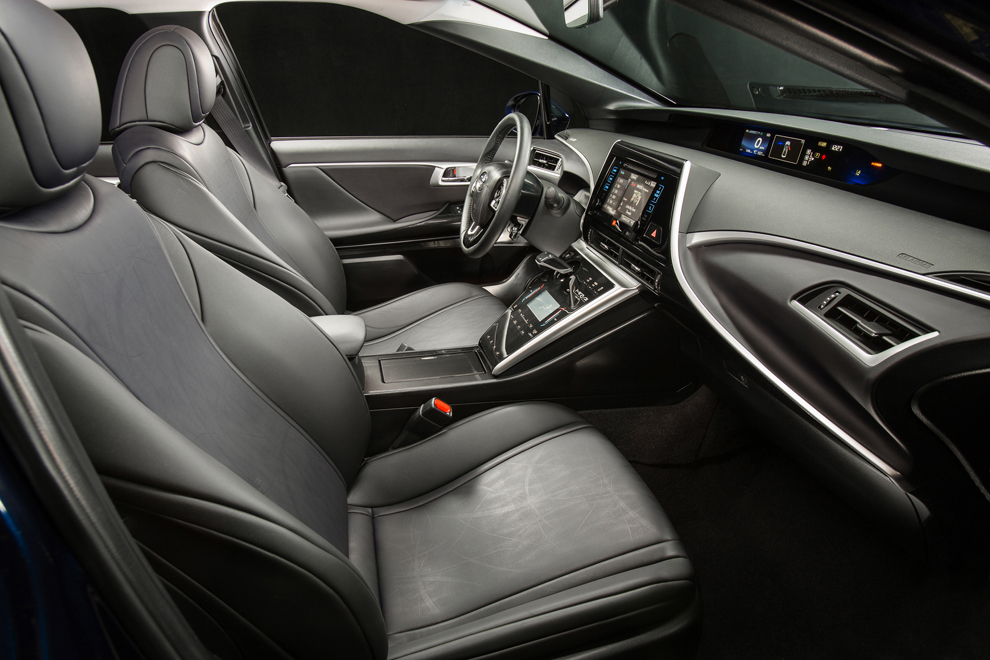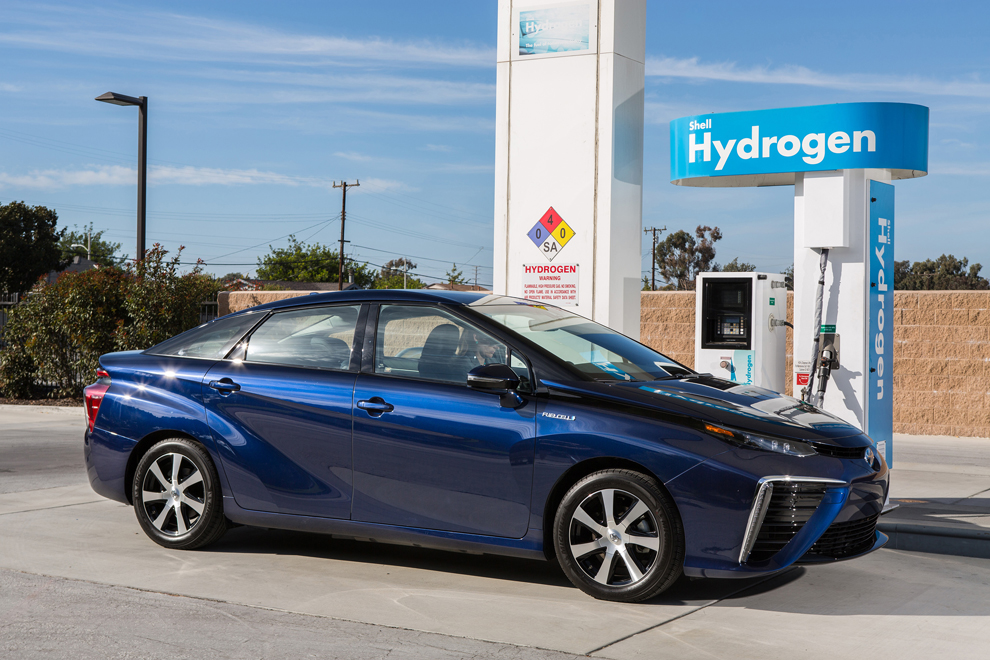DETROIT – Toyota will be launching its Mirai fuel cell car soon in California, in the teeth of falling gas prices, a paltry network of hydrogen fueling stations, and media infatuation with Tesla that is finally expected to build a salable version of its much-delayed Model X SUV.
There are only a handful of hydrogen stations up and running in the Golden State, but the California Fuel Cell Partnership has plans for 40 stations to operate by the end of 2016 and 100 by 2020. The state of California is spending about $20 million a year on the project.
“We like fuel cells because it is the lightest solution,” said Chris Hostetter, Toyota group vice president of strategic planning. “It has cost advantages over electric vehicles because we are making the electricity on board rather than pulling it from the grid.”
Toyota is not the first to bring a hydrogen fuel cell car to market. Honda sold a handful of its FCX Clarity fuel cell cars between 2008 and this year, but it ended production with the 2015 model year. It is expected to launch another fuel cell model sometime in the next two years.
Hyundai recently launched a fuel cell version of its Tucson in 2013 it has sold only about 300 so far. But Toyota is making a very aggressive bet that fuel cell vehicles could over time equal or surpass plug-in electric hybrids in consumer acceptance.
The Mirai was conceived about the same time as the Prius gas-electric hybrid, in the early 1990s.
The sales goals in the U.S. are modest. With only 200 to 300 being shipped by the end of this year, the goal is of selling 3,000 in this country by the end of 2017.
At a sticker price of $58,250 before tax credits, Mirai won’t be inexpensive, but most early customers are expected to lease it for about $500 a month. And Toyota is kicking in three years, or $15,000 worth, of hydrogen which has recently sold in the range of $7 to $13 per kilogram.
The only emission is water.
Next year there will be another set of fueling stations funded by Toyota and partner Air Liquide that will stretch from New Jersey through New York, Connecticut, Rhode Island and Massachusetts.
The range of Mirai at one fill is 312 miles. An optional power take-off feature can deliver up to 9 kilowatts of power (60 kWh total), enough for emergency situations.
At first glimpse the car looks distinctive, and some will say, strange. The front hood is wrapping with a belt-like edge that elevates it from the grille which is highlighted by two trapezoids sitting beneath the narrow head lamp slits. From the rear, Mirai appears more mainstream.
For the first-adopter eco-conscious consumer, there is debate about whether the Mirai is actually casting a smaller carbon foot print than most plug-in electric vehicles.
“The challenge for hydrogen vehicles is that in terms carbon footprint they are much cleaner than gasoline cars, but they are nowhere near as clean as plug-in cars,” said John Voelcker, senior editor of Green Car Reports.
One kilowatt hour of electricity can be used to recharge a battery that, in turn, powers a car. Or you can create one kilowatt hour of electricity by refining hydrogen from a feed stock, most commonly natural gas, which is extracted from a well or through hydraulic fracturing.
That hydrogen then is compressed and fed into a fuel cell to create electricity, but losing about 40 percent of the hydrogen in the process, Voelcker said.
“For the same kilowatt-hour of electricity you’re getting about a third as many miles from the fuel car vehicle,” he said.
But hydrogen wins from a convenience perspective. If you’re near a fueling station, it’s just as quick as filling up with gasoline or diesel.
The carbon footprint equation also can change if the hydrogen is created from renewable energy sources such as solar panels or wind turbines.
As with the Prius, Mirai is not driven by a short-term business case. It won’t be sexy. Silicon Valley media star and Tesla Motors CEO Elon Musk has dismissed the technology as “fool” cells.
Because Toyota has such a broad product portfolio and is currently the most profitable mainstream automaker, it has the patience to see whether hydrogen mobility works in the long run.
“Toyota really doesn’t have high financial expectations for Mirai. It is not positioned at a Tesla-killer,” said Mike Millikin, editor of the Green Car Congress. “It’s a significant step in a long-term strategy.”
To underscore how incremental the marketing of Mirai is, Toyota is interviewing prospective owners to make sure they live within a feasible distance from a fueling station. Driving along I-5 from the Mexican border to Oregon probably won’t work, at least until there are more than a few stations along that route.
Then again, this is about yet another option in our growing menu of mobility options.
“Germany sees it. Most of the Scandinavian countries see it,” Hostetter said.
“In Japan the government is very strongly behind it, partly because of the backlash against nuclear power after Fukushima,” he said, referring to the nuclear plant that was destroyed by the tsunami of March 2011.
Send questions/comments to the editors.






Success. Please wait for the page to reload. If the page does not reload within 5 seconds, please refresh the page.
Enter your email and password to access comments.
Hi, to comment on stories you must . This profile is in addition to your subscription and website login.
Already have a commenting profile? .
Invalid username/password.
Please check your email to confirm and complete your registration.
Only subscribers are eligible to post comments. Please subscribe or login first for digital access. Here’s why.
Use the form below to reset your password. When you've submitted your account email, we will send an email with a reset code.